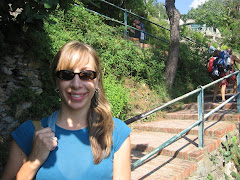
Hello my little scientists,
We are going to be starting our Science unit on Understanding Structures and Mechanisms: Gears and Pulleys. I know that many of you expressed a great interest in this topic and I think we will have a great time learning. Some of the areas we will be covering will include:
- identification of objects that have gears in their mechanisms
- identification of different kinds of simple machines
- objects that contain pulleys and the work they do
- understanding the mechanisms of a fixed and movable pulley
I just discovered that The Ontario Science Centre has a hands-on workshop about this very topic. I believe that in order to truly learn Science you need to be hands on. So, boys and girls, we will be making our way to the Science Centre very soon! I will provide a date and additional details as I get them. In the meantime, please go to the The Ontario Science Centre website and start looking for any information that you can find about gears and pulleys. You may also want to visit Simple Machines Learning Site to help you with your research on this topic. Remember, to take notes as you research and come prepared to share your findings with the class.
Sincerely,
Mrs. Mulone




















